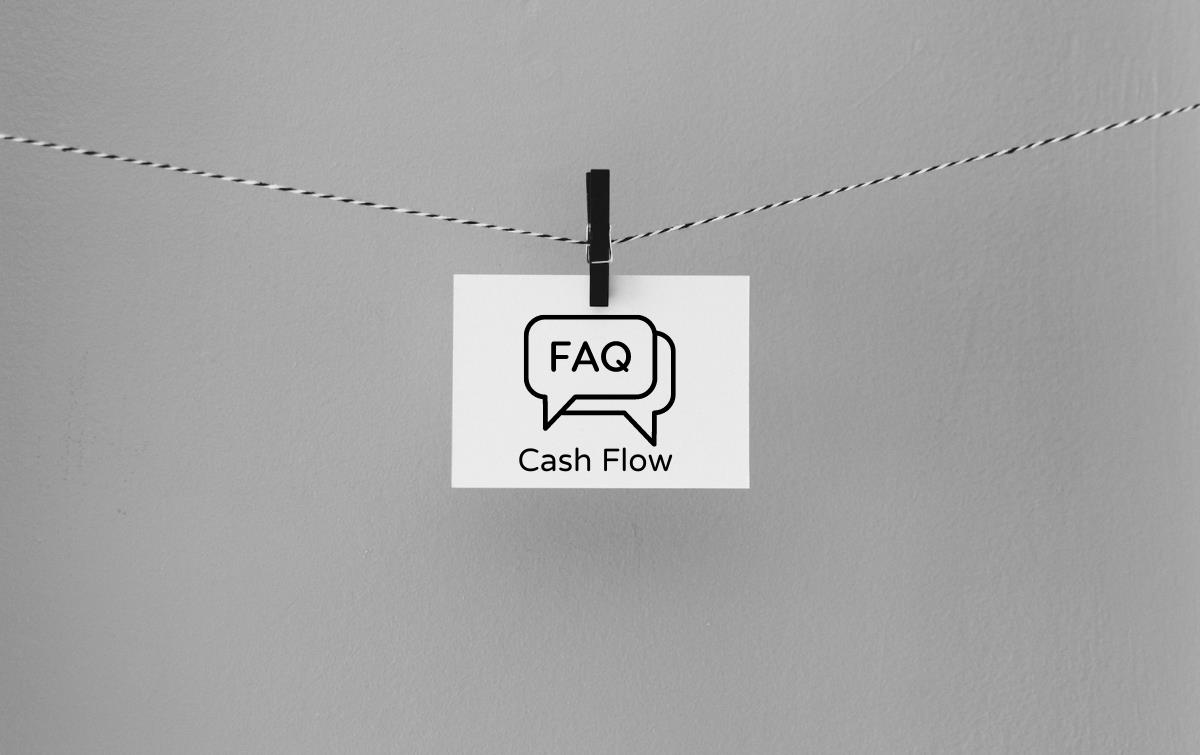Cash flow is the amount of money a company receives in the form of revenue and gives out in the form of expenditure. Positive cash flow means you have more money flowing into your company than out. Negative cash flow, as you may have guessed, indicates more money moving out than in.
Liquidity is vital to any business, so the need for cash flow management can't be underestimated. Cash flow management is the process of tracking, evaluating, and optimizing your company's cash outflows and inflows. For your business to succeed, it should have enough cash to cover expenses and invest in growth opportunities.
In this article, we'll share some key tips on how to improve the cash flow of your business. We'll also provide answers to some common questions about cash flow.
Methods to improve your cash flow

While increasing the cash flow of your business is vital, curbing areas where your business is bleeding cash is just as important. Here are some cash flow management strategies you can consider:
Get your customers to make payments on time
The best way to get customers to make payments after making sales is to stay on top of invoicing. The faster you send invoices, the quicker you get paid. Here are some invoicing tips you can take advantage of:
- Follow up with invoice reminders; send reminders a few days before the invoice is due, when it's due and a few days after the due date.
- Incentivize payments by offering customers discounts when they pay before a stipulated time.
- Automate your invoicing with cloud-based accounting apps like Xero and FreshBooks for easy-to-create, attractive invoices.
- Introduce late payment fees as a penalty for customers who fail to make payments on or before invoices are due.
Encourage digital payment methods
Instead of using mailed-in checks, encourage your customers to use digital payment methods like direct deposit or online payment processing platforms. Though some digital payment platforms charge processing fees, it beats waiting a few days or weeks for physical checks[1] to be cut, mailed, and deposited into your bank.
Re-evaluate your pricing
Your cash flow might be poor due to low pricing. You want to ensure you're getting well compensated for the hard work and quality of services your business renders. If your prices are too low, your revenue may not be enough to cover operational costs, even with increased sales. Here are some questions to ask yourself before re-evaluating your pricing strategy:
- What do my competitors charge?
- Has the cost of inventory or equipment increased?
- How much labor does my services or inventory assembly require?
- What pricing would account for the time it takes to create my pricing?

Explore new ways to increase sales
Increasing your value proposition as a business is a great way to increase sales, which would result in more cash inflows. Sales are the lifeblood of a company, so coming up with an effective plan for boosting sales can help increase your cash flow. Here are a few options you can explore:
- Add new services and products that complement what you already offer. What else can you offer? How can you provide new solutions to your clients?
- Extend your reach by exploring new marketing strategies. Converting new customers is an excellent way of increasing sales.
- Encourage your existing customers to buy more by incentivizing purchases, like offering discounts on bulk sales.
Reduce operational costs
Reducing operational costs to limit cash outflows is another method to improve your cash flow. You can manage negative cash flow by reducing the money that leaves your business. Here are some tips to help you manage your operational costs:
- Analyze your current operational cost and eliminate any unnecessary expenses. You can also find cheaper alternatives to seemingly necessary expenses without compromising quality.
- Ensure your business is running as efficiently as possible by streamlining your business processes. You can incorporate software like DeskTime to help increase employee productivity.
- Invest in efficient equipment. Though the overhead cost might be high, you reap the benefit in the long run. However, if your budget can't accommodate a flat-out buy, you can always consider leasing.
Manage your inventory and vendors
You don't want to make the mistake of paying your vendors for stock that isn't making sales. Ensure the money you are investing in your inventory balances out with revenue and consumer interest. Here are a few tips on how to manage your stock and suppliers:
- Swap out SLOB inventory (slow and obsolete inventory) with fast-moving items with a high product turnover rate.
- Keep track of your inventory and adopt a system that notifies you when you need to order new stock.
- If your terms of trade allow you to delay payment for goods delivered, maximize the extra time, as it's equivalent to an interest-free loan.
Forecast your cash flow
Running a cash flow forecast helps you understand how solid or shaky your business is now, and how it might perform in the future. A cash flow forecast is not a one-off exercise; it must be maintained and updated regularly. This will give you ongoing information on your liquidity position.
Get a support network
Cash flow problems are common to most businesses, especially those in the start-up phase. Also, it can be confusing not knowing if you're making the best decisions regarding your cash flow or not. So, you should seek counsel from others, such as a financial advisor, a peer advisory board or your board of directors.
FAQs on improving cash flow

What are the signs of cash flow problems?
Here are the top four signs you might be having cash flow problems:
- You're unfamiliar with your cash flow position.
- Your working capital is low despite high sales.
- Your business isn't growing.
- Accumulation of outstanding invoices.
How do you calculate cash flow?
Simply put, cash flow equals your cash inflows subtracted by your cash outflows.
Free Cash Flow = Operating Cash Flow - Capital Expenditure.
Why is cash flow important?
Cash flow is important because it measures a company's cash position. It helps businesses know for sure that they're not only profitable, but they've also got enough cash to run their business successfully.
How can you quickly improve cash flow?
You can quickly improve your cash flow by reducing operational costs and staying on top of your invoicing.
Longer term methods including re-evaluating your pricing strategy, increasing sales, and managing your stocks and suppliers.
Cash flow: the most important thing to consider
Cash flow management is a balancing act — while you focus on raising sales to generate revenue, you should also track your expenditure to ensure you're not losing more cash than you're raising.
A good cash flow indicates a growing business, but that's not all it takes to grow and run a successful business. If you wish to learn more about this, read our article on 8 easy steps to grow your business.